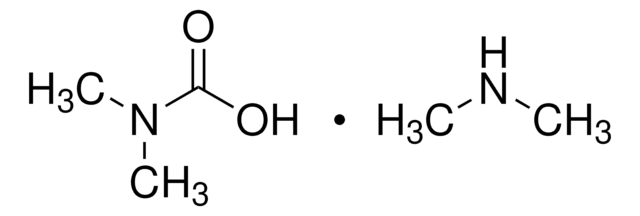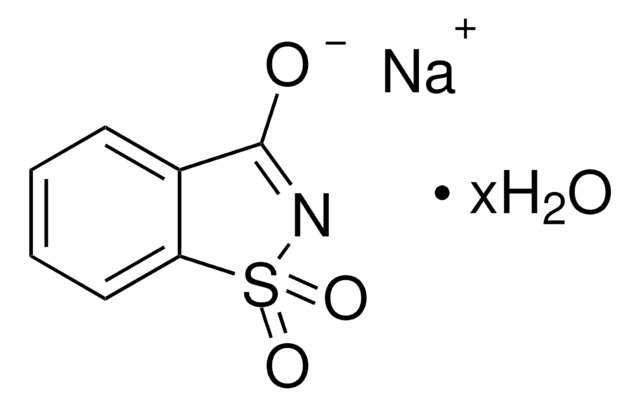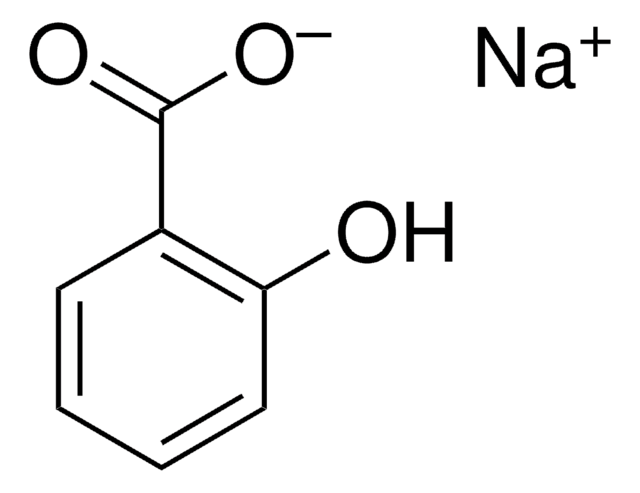Kluczowe dokumenty
109169
Sodium benzoate
ReagentPlus®, 99%
Synonim(y):
Benzoic acid sodium salt
About This Item
Polecane produkty
Poziom jakości
linia produktu
ReagentPlus®
Próba
99%
mp
>300 °C (lit.)
rozpuszczalność
water: soluble(lit.)
grupa funkcyjna
phenyl
ciąg SMILES
[Na+].[O-]C(=O)c1ccccc1
InChI
1S/C7H6O2.Na/c8-7(9)6-4-2-1-3-5-6;/h1-5H,(H,8,9);/q;+1/p-1
Klucz InChI
WXMKPNITSTVMEF-UHFFFAOYSA-M
Szukasz podobnych produktów? Odwiedź Przewodnik dotyczący porównywania produktów
Opis ogólny
Sodium benzoate serves as a catalyst in the Knoevenagel condensation reaction to synthesize carbon carbon bond formation.
Zastosowanie
Informacje prawne
Hasło ostrzegawcze
Warning
Zwroty wskazujące rodzaj zagrożenia
Zwroty wskazujące środki ostrożności
Klasyfikacja zagrożeń
Eye Irrit. 2
Kod klasy składowania
13 - Non Combustible Solids
Klasa zagrożenia wodnego (WGK)
WGK 1
Temperatura zapłonu (°F)
Not applicable
Temperatura zapłonu (°C)
Not applicable
Środki ochrony indywidualnej
Eyeshields, Gloves, type N95 (US)
Wybierz jedną z najnowszych wersji:
Certyfikaty analizy (CoA)
Nie widzisz odpowiedniej wersji?
Jeśli potrzebujesz konkretnej wersji, możesz wyszukać konkretny certyfikat według numeru partii lub serii.
Masz już ten produkt?
Dokumenty związane z niedawno zakupionymi produktami zostały zamieszczone w Bibliotece dokumentów.
Klienci oglądali również te produkty
Nasz zespół naukowców ma doświadczenie we wszystkich obszarach badań, w tym w naukach przyrodniczych, materiałoznawstwie, syntezie chemicznej, chromatografii, analityce i wielu innych dziedzinach.
Skontaktuj się z zespołem ds. pomocy technicznej






